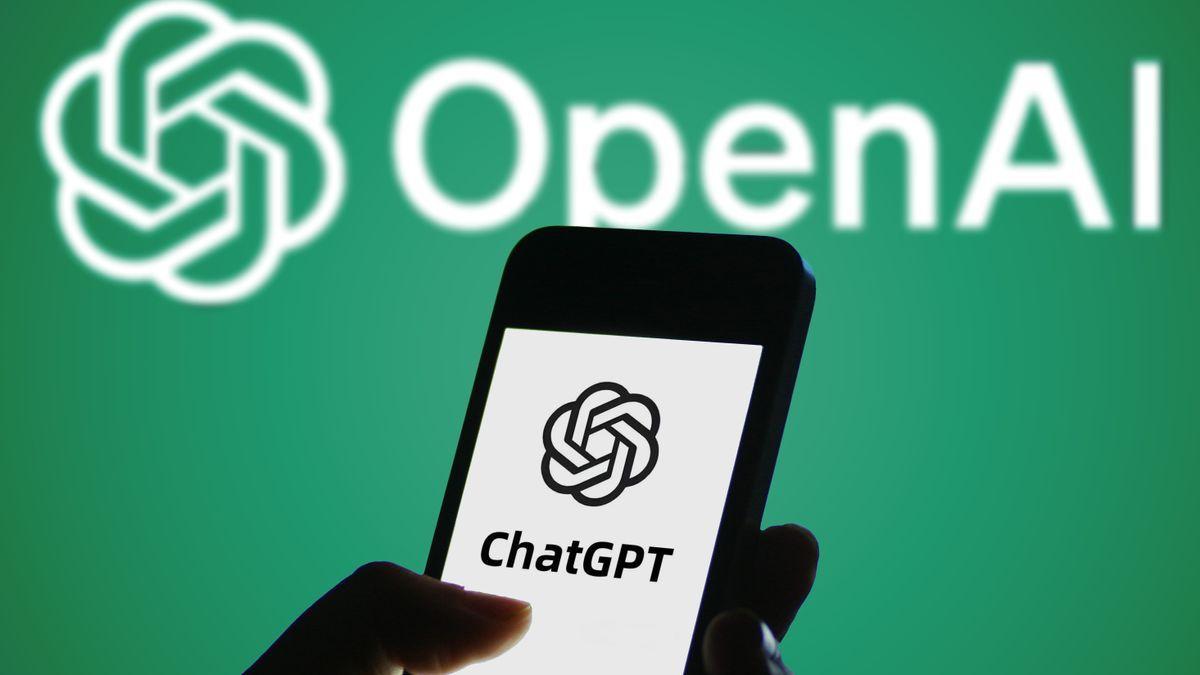Visa Unveils New AI Tools to Revolutionize E-Commerce and Payments
5 Sources
5 Sources
[1]
Visa's AI-enhanced payment options will be coming to more apps soon, thanks to new MCP support
Now, Visa Intelligent Commerce offers Model Context Protocol (MCP) support. AI agents can optimize how people do everyday tasks in the digital world, including shopping. In May, Visa unveiled Visa Intelligent Commerce, which allows developers and engineers to use the firm's payment network to create agentic AI shopping experiences. The initiative has now received another update to expand its reach. Also: I'm an AI tools expert, and these are the only two I pay for (plus three I'm considering) On Thursday, Visa unveiled the Model Context Protocol (MCP) Server for Visa Intelligent Commerce. Developers can connect their projects to Visa Intelligent Commerce APIs through the MCP Server and a new Visa Acceptance Agent Toolkit. In short, the two approaches combined should make it easier for developers to build agentic e-commerce experiences that leverage Visa's network (a win for consumers who'll be able to access these features, too). Since its introduction last year, MCP has become widely regarded as an open standard for seamlessly and securely connecting AI assistants and agents to data systems. Also: This handy Apple Intelligence feature saves me over $200 a year When applied to Visa Intelligent Commerce APIs, this "ready-made integration layer," as Visa described it, allows developers to access Visa's capabilities while keeping security at the forefront. Visa said this integration can help developers move from idea to prototype in hours rather than days or weeks. While that claim isn't verifiable, building new agentic experiences using Visa's network should likely be easier, which should mean more helpful experiences for users. Easier checkout experiences fielded by agentic AI are also a win for any e-commerce retailer. While the MCP Server, now open in pilot, starts with Visa Intelligent Commerce APIs, the company said that it will eventually extend across Visa's broader API portfolio. The Visa Acceptance Agent Toolkit, now available in pilot, is built on top of the MCP Server to help developers work with AI agents without an extensive coding background, but rather just using natural language. The blog post from Visa said the Toolkit includes pre-built workflows for commerce tasks, conversational prompts, and integrations with chat interfaces, tools, and more. Also: I tried every new AI feature on the Google Pixel 10 series - my thoughts as an AI expert Visa offers real-world examples of the process in action, including one in which an AI agent responds to a request, "Create an invoice for $100 for John Doe, due Friday," by using the Toolkit to call the Invoice API and return an appropriate payment link. In another example, a business analyst asks the AI agent to provide a revenue summary for a particular state, and the AI does so by pulling transaction data from reports that it's allowed to access. The company said it is also exploring new B2B and B2C use cases that encourage other ways for developers to tap into Visa's offerings to build new agentic commerce experiences. This goal aligns with an industry-wide effort to use AI in e-commerce to serve shoppers and boost sales. For example, OpenAI and Google have unveiled AI shopping features in their chatbots that use AI to help connect people to what they are looking for more seamlessly. Retailers, such as eBay and Amazon, have also tried to incorporate technology to make it easier for users to find what they are looking for. A recent Adobe study showed that there may be merit to these efforts, with 39% of the 5,000 respondents having used generative AI for online shopping, including tasks such as conducting research, receiving product recommendations, seeking deals, and getting present ideas.
[2]
Visa Launches MCP Server and Agent Toolkit to Advance Agentic Commerce
The company also announced the pilot of the Visa Acceptance Agent Toolkit, which runs on the MCP Server. Visa has expanded its Intelligent Commerce program with the introduction of a Model Context Protocol (MCP) Server and a Visa Acceptance Agent Toolkit, designed to help developers and business users connect AI agents directly to Visa's network. The MCP Server allows developers to link AI agents and large language models with Visa Intelligent Commerce APIs, creating a standardised and secure way to integrate payments. "For AI agents and LLMs to interact with Visa's trusted network, they need a secure, consistent way to communicate with our services," the company said in its announcement. According to Visa, the MCP Server eliminates the need for custom-built integrations, accelerates prototype development, and allows agents to dynamically apply Visa APIs to commerce tasks. Early
[3]
Visa introduces new tools for developers building AI agents engaged in commerce - SiliconANGLE
Visa introduces new tools for developers building AI agents engaged in commerce Visa Inc. announced today its continued expansion into what the company calls "agentic commerce" with enhancements to its Visa Intelligent Commerce platform, an artificial-intelligence-based payments solution that allows AI agents to shop and make purchases. Visa introduced the Intelligence Commerce platform in late April, providing developers with application programming interface resources for AI platforms and agents to interact with the company's payment network. Today, Visa announced two tools for its agentic commerce platform: a Model Context Protocol server, which allows developers to connect AI agents to the platform, and the pilot of the Visa Acceptance Agent Toolkit. "Soon people will have AI agents browse, select, purchase and manage on their behalf," said Visa Chief Product and Strategy Officer Jack Forestell. "These agents will need to be trusted with payments, not only by users, but by banks and sellers as well." Agents are a type of AI software that go beyond the usual chatbot query-response capability of just replying with an image or text. They can perform complex multipart tasks with little or no human oversight. Agentic AI brings the role the artificial intelligence in everyday life closer to a technology that can both understand natural language instructions and then execute them using the tools at its disposal. It provides the framework for actively intelligent, action-taking AI assistants. Visa said it envisions a near future where people will ask AI agents to perform payments and invoicing actions for them. To make this happen, there need to be tools that allow AI agents not just to browse the web and find shopping links for a user, as Google LLC and OpenAI are exploring, but also to make payments on their behalf. The toolkit is built on top of the MCP server to provide a developer-friendly solution that simplifies the steps to building and connecting AI agents to Visa's network. It can also be used directly via an AI software development kit. An MCP server enables AI applications, such as OpenAI's ChatGPT and Anthropic PBC's Claude, to connect to and use software tools without the need to write integration code. By opening up an MCP server, Visa is allowing AI agents to plug directly and securely into the company's payment infrastructure, access APIs and test commerce actions. The Visa Acceptance Agent Toolkit, now available in pilot, contains a broad workbook and integration library to allow developers and businesses to build AI apps with a jumpstart. It features prebuilt workflows for common commerce tasks, such as invoicing and pay-by-link. Additionally, it includes plain-language prompts that allow both professional developers and non-savvy users to trigger actions using simple commands. For example, a merchant support agent could take action after being told, "Make me an invoice for $155.55 for John Doe, due Friday." With the toolkit, the agent would call the Invoice API, enter the details and submit a secure payment. The company said no manual development would be required. Similarly, an accountant or analyst could ask an agent to provide a summary of a week's revenue across all invoices, including the unpaid ones. The agent could then securely retrieve the invoice information and report on the transaction data.
[4]
Deep Dive: The Checkout Killer? Visa's AI Agents Are Open for Business: By Sam Boboev
Imagine telling an AI assistant to "plan my trip to Miami," then sitting back as it finds the perfect flight, hotel, and even buys that new fishing reel you wanted - all on its own. That's the vision behind Visa's Intelligent Commerce, a new platform that lets AI "agent" software find, shop, and buy on your behalf. At Visa's recent Product Drop 2025 event, CEO Ryan McInerney and Chief Product Officer Jack Forestell unveiled this initiative as a "new way to buy with AI in the same trusted, secure way to pay". It's Visa's big bet on agentic commerce, where autonomous AI agents handle the whole shopping journey for consumers. The goal? To close the "discovery - to - purchase" gap - so when an AI finds you the perfect item, it can actually check out and pay seamlessly, with all the fraud protections and trust of Visa's network. One thing's for sure, the commerce UX is evolving. In a few years, we might reminisce about how we used to spend hours comparison - shopping and filling out forms, while our AI butlers handle the mundane purchasing in the background. And Visa will be quietly running the register for all those machine - mediated transactions - taking its (hopefully reduced) cut, but at far greater volume. New world, same Visa? Not exactly, but Visa is doing what savvy incumbents do - skate to where the puck is headed. And in 2025, that puck is an autonomous agent eager to buy stuff for us. Get ready - your next customer might not be human, and now is the time to plan for it. In this deep dive, we'll break down what Visa Intelligent Commerce is offering, why it matters for the fintech and payments ecosystem, and where it might be headed - including how it intersects with Web3's world of programmable money and crypto. Let's dig in. Visa's Intelligent Commerce Visa's Intelligent Commerce initiative is essentially a developer platform and partner program to enable AI - driven buying. It introduces a suite of five APIs - spanning tokenization, authentication, personalization data, payment instructions, and payment signals - designed to let AI agents transact as securely and smoothly as any human shopper. Visa also announced an agent onboarding framework (through a partner program) that will vet and certify AI agents before they can tap into the network. And they didn't go it alone - Visa lined up key partnerships with big names across AI and fintech to jumpstart this ecosystem. They're collaborating with OpenAI to help set agentic commerce standards and enable use cases on OpenAI's platforms. They're working with Stripe (a leading payments processor already experimenting with agents) to adopt Visa's solution and drive agent - based payments. Perplexity AI, a fast - growing AI search platform, is integrating Visa's personalization APIs to make its shopping recommendations more tailored. Ramp, known for business finance, is exploring B2B agent use cases with Visa. And Scale AI is partnering on the infrastructure side to support enterprise - grade agent commerce. In short, Visa is rallying both AI innovators and traditional payment players to build out an "agentic commerce" network backed by Visa's trust. So what do these new APIs actually do? Visa described five core services that together give an AI agent the same capabilities a human user has in e - commerce today - with extra guardrails. Here's a quick rundown - * AI - Ready Cards (Tokenization & Authentication) - Visa is upgrading its tried - and - true tokenization and user authentication tech (the "workhorses" of digital payments) for the agent era. Tokenization means your 16 - digit card number gets replaced with a unique digital token. In this case, Visa will issue a token specific to your AI agent once your bank verifies "you are you". That token is bound to your agent and locked by default - it only activates for purchases when you (the human) give your agent permission. Meanwhile, strong authentication (think Visa Secure, 3 - D Secure, biometrics, etc.) is built in so that when you first "onboard" your card to an agent, your bank verifies it's really you and approves enabling that agent. In essence, your AI assistant gets its own Visa card token that it can use, but only under your explicit consent and only with that trusted agent platform. * Personalization (Data Tokens) - One big advantage of an AI shopping for you is that it can know your preferences. Visa has a service called Data Tokens which takes insights from your purchase history (e.g. brands you like, hotels you prefer, your dining tastes) and packages them into privacy - preserving "insights" an agent can use. Importantly, Visa emphasizes you stay in control of your data - you must opt in and consent to share these personalization tokens, and you can turn them off anytime. The data tokens don't expose your raw transaction history; they're more like hints ("user prefers boutique hotels over budget options") that an AI can plug into its prompts to refine recommendations. In the demo, once the user toggled on personalization, the agent's travel suggestions immediately improved - no more beach hotels (which the user hates) and more sushi restaurants and activities that matched his actual interests. The takeaway - Visa is injecting its rich transaction data into the AI's logic - with user permission - to make agent - led shopping feel eerily spot - on (and to save you from endless irrelevant search results). * Payment Instructions - This is a brand new API Visa built to serve as a "digital handshake" of trust between user and agent. When your agent is ready to buy something, it will present you with a summary - the items, prices, merchant, etc. - and ask for your go - ahead. Visa's Payment Instructions API will then record the exact purchase parameters you approved (the who/what/when of that transaction) and store it as a signed record. Think of it as the agent's permission slip - it proves the AI had your authorization to make that specific purchase. This instruction is basically the user's intent, formally captured. It ensures that later, if there's any dispute ("Hey, did my AI just buy the wrong flight?"), there's an authoritative log of what you actually agreed to. It also limits what the agent can spend your money on - a clever way to prevent a runaway bot from buying 100 TVs on your card. Visa is essentially formalizing, "Yes, my user said it's OK to buy these items under these conditions." * Payment Signals - Finally, when the agent goes to actually charge the card token at a merchant's checkout, Visa's Payment Signals API comes into play. Right before payment, the agent sends Visa a "purchase signal" describing the pending transaction (merchant, amount, etc.). Visa's system then matches it against the stored payment instruction you approved earlier. If everything lines up correctly, Visa unlocks the token for that one transaction and lets the payment proceed to the merchant. If something doesn't match (say the price or merchant is different), the agent won't get authorization to charge. This Payment Signals step also shares rich context with the bank, merchant, etc., about the transaction - helping with fraud checks, posting the transaction details properly, and post - purchase servicing. Essentially, it links the dots for all parties - the issuer and merchant see that this transaction was initiated by a trusted agent and conformed to the user's instruction, which makes it far more likely to be approved and not disputed. The result should be fewer false declines, less fraud, and no more mystery "who made this purchase?" confusion in an agent - driven transaction. Taken together, these components form a full agent - commerce pipeline. The first time you use an AI agent to buy something, you'll go through a one - time setup - securely add your Visa card to the agent (via a tap or scan), authenticate with your bank, and set any limits or preferences. Visa then provisions the token and from that point on, your agent is "payment - enabled." Going forward, the flow is - you ask agent for something → agent finds it → agent asks your permission to buy → you confirm (maybe with a quick authentication) → agent completes purchase in the background. From the user's perspective, it's a conversation followed by a simple confirmation. Behind the scenes? A lot of heavy lifting by Visa's APIs to make it feel magic. Disclaimer: Fintech Wrap Up aggregates publicly available information for informational purposes only. Portions of the content may be reproduced verbatim from the original source, and full credit is provided with a "Source: [Name]" attribution. All copyrights and trademarks remain the property of their respective owners. Fintech Wrap Up does not guarantee the accuracy, completeness, or reliability of the aggregated content; these are the responsibility of the original source providers. Links to the original sources may not always be included.
[5]
Visa Gives Developers New Tools to Accelerate Agentic Commerce | PYMNTS.com
By completing this form, you agree to receive marketing communications from PYMNTS and to the sharing of your information with our sponsor, if applicable, in accordance with our Privacy Policy and Terms and Conditions. "There's almost a reimagining of the internet going on right now," Visa Senior Vice President and Global Head of Growth Rubail Birwadker told PYMNTS CEO Karen Webster. For the past 30 years, eCommerce has been about keeping bad bots out. The fraudsters, scrapers and hostile traffic. Now, the challenge is flipped. The bots showing up represent consumers and real intent to buy. Visa's answer is to give developers the connective tissue to work with these new agents instead of blocking them. Visa announced Thursday (Sept. 4) it will open access to its production Model Context Protocol (MCP) server so developers can plug artificial intelligence (AI) agents directly into Visa Intelligent Commerce application programming interfaces (APIs). The company is also piloting an Acceptance Agent Toolkit that lets nontechnical teams generate invoices, create payment links and run analytics using plain prompts. The goal is to compress the path from idea to functioning, payment-enabled agent while keeping every transaction tied to Visa's security framework. "If this works really well for just 5% or 10% of consumer experiences, that's not the bar," Birwadker said. "It needs to work for nearly all consumer experiences, the way Visa's card experience works everywhere." Birwadker described the MCP server as a secure integration layer that standardizes how agents and large language models interact with Visa's services. Starting with Visa Intelligent Commerce and extending across more APIs, it reduces weeks of custom development to hours, he said. On top of that sits the Acceptance Agent Toolkit, which lets business teams trigger prebuilt workflows like invoices or ad hoc revenue summaries with plain commands inside chat. "The goal is to extend the trust of the Visa brand into the future of agentic commerce," Birwadker said. "An MCP layer removes friction for developers and drives standardization at scale." Visa has been testing MCP internally and with partners since the spring launch of Visa Intelligent Commerce. Now, the company wants to "extend the edges of our network to make it even easier for agents and other companies to build on." Birwadker expects access layers like MCP to become "a relatively important tool" because websites today or even developer docs "were not really designed with agents in mind." MCP lets developers "build once, reuse everywhere," making agent behaviors portable across markets and use cases. He said that teams are already testing real checkout flows: how fast transactions complete, how multi-merchant purchases work, and how to keep legitimate agent traffic from being misclassified as bots. "This all works," Birwadker said. "We just need to work the kinks out," given the abstraction and automation unique to agent-led buying. For merchants, the Acceptance Agent Toolkit provides on-ramps that do not require code. A simple command such as "Create an invoice for $100 for John Doe, due Friday" returns a secure payment link. Asking "Summarize today's revenue in New York State" retrieves permitted transaction data. The aim is to give Visa Acceptance customers fast, practical wins on repetitive tasks that make agentic commerce real and scalable. Birwadker sees three merchant camps forming as agentic AI's relatively short life has already shifted from curiosity to the reality that this new channel is how their customers want to discover products and pay for them. Some embrace it as a new channel for discovery and sales, eager to be found inside agent experiences. Established retailers are rethinking acquisition economics as agent channels capture more traffic and traditional strategies are no longer effective. A cautious group focuses on protecting margins and controlling fraud. Despite their differences, Birwadker said, "the consensus is that agentic commerce is not a trend ... it's a new paradigm." Even right away. Several large retailers are already exploring pilots during the holiday peak. "Yes, a number of large retailers are," Birwadker confirmed. "We're working through it." Webster noted that trust will become the gating factor of agentic success for merchants, issuers and consumers. And building it is dependent on one factor alone. Birwadker agreed, saying it starts with identity: anchoring agents to authenticated credentials through a consumer's bank. Layering in enriched data payloads before, during and after each transaction ensures disputes can be resolved fairly. If an agent buys a blue bag instead of a black one, standardized data must show what happened so liability can be assigned between issuers and merchants. "Identity followed by the right data payloads with the right authentication is the way to do this at scale," he said, pointing to Visa's broader work tokenizing credentials. The path forward will not be seamless. Developers and merchants must adapt infrastructure built for human browsing to a world where agents shop and transact. That is why Visa is putting MCP in developers' hands and a no-code toolkit in merchants' hands, to standardize the connective layer and accelerate real-world learning. For Birwadker, the endgame is ubiquity. A technology that only works in a handful of scenarios will not move the needle. Agentic commerce must be as seamless and trusted as swiping a Visa card is today. The company intends to iterate quickly, he said, until the trust quotient, usability and standardization is built. "The easier it is for developers and merchants to build on MCP, the more likely it becomes the default," he said. "Our bar isn't niche adoption. It's ubiquity." PYMNTS CEO Karen Webster is one of the world's leading experts in payments innovation and the digital economy, advising multinational companies and sitting on boards of emerging AI, healthtech, and real-time payments firms. She founded PYMNTS.com in 2009, a top media platform covering innovation in payments, commerce, and the digital economy. Webster is also the author of the NEXT newsletter and a co-founder of Market Platform Dynamics, specializing in driving and monetizing innovation across industries.
Share
Share
Copy Link
Visa introduces Model Context Protocol (MCP) Server and Visa Acceptance Agent Toolkit to advance agentic commerce, enabling AI agents to interact securely with Visa's payment network and simplifying development of AI-driven shopping experiences.

Visa's Leap into Agentic Commerce
Visa, the global payments giant, has taken a significant step towards revolutionizing e-commerce with the introduction of new tools designed to facilitate AI-driven shopping experiences. The company has unveiled the Model Context Protocol (MCP) Server and the Visa Acceptance Agent Toolkit, both aimed at advancing what Visa calls 'agentic commerce'
1
2
.The MCP Server: A Bridge Between AI and Payments
The MCP Server is a groundbreaking addition to Visa's Intelligent Commerce platform. It allows developers to connect AI agents and large language models directly to Visa's payment network through Intelligent Commerce APIs
2
. This integration layer standardizes and secures the communication between AI assistants and Visa's services, potentially reducing development time from weeks to hours3
5
.Visa Acceptance Agent Toolkit: Simplifying AI Integration
Complementing the MCP Server is the Visa Acceptance Agent Toolkit, currently in its pilot phase. This toolkit is built on top of the MCP Server and is designed to help developers and business users create AI-driven commerce experiences without extensive coding knowledge
2
3
. It includes pre-built workflows for common tasks, conversational prompts, and integrations with various interfaces1
.Real-World Applications and Examples
Visa has provided several examples of how these new tools can be applied in real-world scenarios. For instance, an AI agent could respond to a request to create an invoice by automatically calling the Invoice API and returning a payment link
1
5
. Similarly, a business analyst could ask for a revenue summary for a particular state, and the AI would securely retrieve and report on the relevant transaction data3
.The Vision for AI-Driven Commerce
Visa's Chief Product and Strategy Officer, Jack Forestell, envisions a future where AI agents browse, select, purchase, and manage on behalf of users
3
. This aligns with the broader industry trend of using AI in e-commerce to enhance shopping experiences and boost sales. Companies like OpenAI, Google, eBay, and Amazon are also exploring AI-driven shopping features1
.Related Stories
Security and Trust at the Forefront
As Visa pushes the boundaries of AI-enhanced payments, security remains a top priority. The MCP Server and Acceptance Agent Toolkit are designed to maintain Visa's trusted and secure payment infrastructure while enabling new, innovative ways to shop and pay
3
5
. This focus on security is crucial as the commerce landscape evolves to include more AI-driven interactions.Impact on the Payment Ecosystem
The introduction of these tools is likely to have far-reaching effects on the payment and fintech ecosystem. By providing a standardized way for AI agents to interact with its payment network, Visa is positioning itself at the forefront of the next evolution in digital commerce
4
5
. This move could potentially reshape how consumers interact with e-commerce platforms and how businesses approach online sales and customer service.Looking Ahead: The Future of Agentic Commerce
As these tools become more widely adopted, we may see a shift in how consumers approach online shopping. The ability of AI agents to handle complex, multi-step transactions could streamline the purchasing process and potentially increase e-commerce activity. However, this also raises questions about consumer privacy, data handling, and the changing nature of customer-business interactions in the digital age
4
5
.Visa's latest innovations represent a significant step towards a future where AI plays a central role in commerce. As these technologies continue to evolve, they are likely to reshape the landscape of online shopping and digital payments, potentially ushering in a new era of AI-assisted consumerism.
References
Summarized by
Navi
[1]
[3]
[4]
Related Stories
Visa and Mastercard Unveil AI-Powered Shopping, Revolutionizing E-Commerce
30 Apr 2025•Technology

Visa and AWS launch partnership to build infrastructure for agentic commerce with secure payments
01 Dec 2025•Technology

Visa Launches Trusted Agent Protocol to Secure AI-Powered Shopping
14 Oct 2025•Technology








